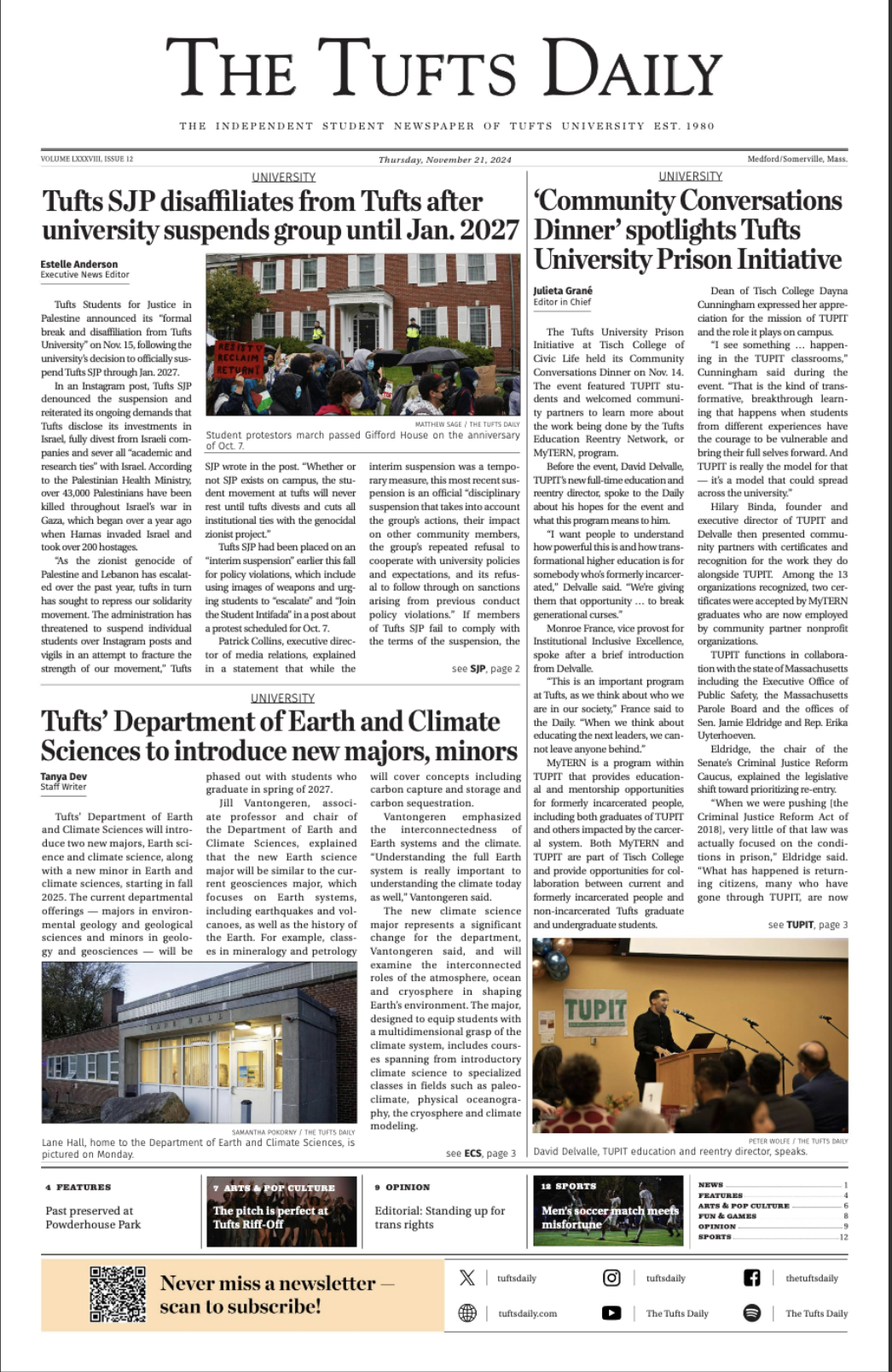The first time I met her was brief and barely memorable — we sat a few rows apart on the 9:30 a.m. shuttle and I admired her shoes.
The second time I met her, she welcomed me into an old warehouse whilst suspended from the ceiling and wearing a hand-sewn cape, where she later allowed a room of strangers, including myself, to cut her hair.
The third time I met her, I made it a point to ask her name.
Mushky Rice, a senior at the School of the Museum of Fine Arts at Tufts (SMFA), is easily one of the most vibrant artists I have met during my commute. She is outgoing, intelligent and incredibly interesting. Everything about her, especially her art, is colorful. She has studied at the SMFA for two and a half years. Her art practice has evolved from mostly traditional drawings and paintings to a wide breadth of mediums including textiles, mixed media, sculpture and performance. Her work, like the enormous quilt she is stitching and the performance exhibition that I initially met her in, focuses mainly on exploring, understanding and reinventing the traditional Chassidic Jewish culture that she was raised in.
“It was a very intense community,” she tells me, reflecting on her childhood in San Raphael, Calif. “I had very little contact with any kind of secular thinking for 22 years.”
It was only after attending several boarding schools and finding some strong role models that she has come to embrace an independent way of thinking. Rice recently decided to break from the Chassidic community.
“It was the hardest thing that I have ever done and am still doing. Things like language, food and family, things that were such important parts of my life, I am still learning how to navigate their loss,” she told me.
Her art plays a huge role in this transition. She has cautiously begun to make art about her religious — or secular — transformation authentically, with performance being a especially unique, personal and expressive element of her art practice.
“I feel like a lot of people use religious iconography [in art] without really going into its full meaning — it’s easy, and they do it because they can, and I really didn’t want to do that,”she explained. “[It is] important to have ... [your art practice] really strongly rooted in something that you connect to, something that is important to you.”
In the reflection piece I saw her perform, she wore a hand-sewn tunic bearing the words “Cut my hair,” and silently walked through the audience, handing out scissors. One by one, we cut away her curly locks, some more aggressively than others, until she was left with a bag of curly brown hair and a very short pixie cut.
With her colorful history and dedication to understanding it, the artist's practice is a testament to this statement. Be sure not to miss her senior thesis show in May, and make sure to look for Rice around Brookline after graduation. Though she is not yet sure what direction her work will take her, I am excited to see what she creates next.





